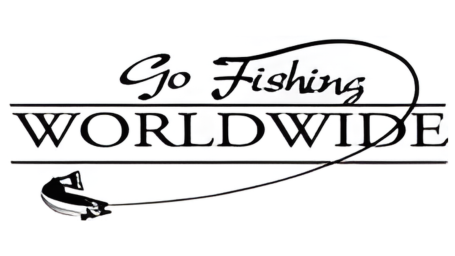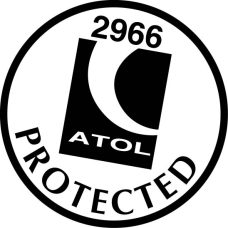CALL US TODAY - 020 8742 1556
LOS ROQUES
Referred to as an archipelago, Los Roques is technically an unspoiled atoll that spans 36km east to west and 24.6km north to south, making it the largest marine park in the Caribbean Sea. There are hundreds of beautiful and pristine flats that form the perfect environment for fly fishing.
Los Roques is considered one of the best bonefishing destinations in the world. You can expect a huge number of daily shots at fish with a solid average weight of 3 – 5lbs, with larger specimens of 6 – 10lbs also common. Beyond bonefish, increasingly Los Roques is being recognised as having a fantastic diversity of flats species to target. In lagoons and mangroves, juvenile tarpon of 5 – 30lbs can be found in good numbers, whilst channels and deeper flats hold larger tarpon of 30 – 80lbs. Also present are permit (of a good average size), triggerfish, jacks, barracuda and snook.
Due to its location 12 degrees north of the equator, the tides, air and water temperatures vary little, which provides consistently excellent fishing conditions. Los Roques is known as ‘the’ place for a wading the flats trip. 90% of your fishing will be done on foot. With its huge range of fishable water, it truly is a wade fisherman’s paradise.
Furthermore, Los Roques offers some of the most breathtaking and unspoiled scenery in the Caribbean. Here, the calm rhythm of nature invites you to slow down and forget the rituals of your daily life. In 1972 Los Roques was declared a National Park, and because of this the islands and reefs have been preserved in their pristine natural state. There are no cars; the village of Gran Roque is a quaint settlement composed of pastel-painted buildings and unpaved roads. The pace of everyday life is relaxed and it offers a friendly and laid-back atmosphere.
2025 / 2026 Go Fishing Worldwide weeks:
1st - 8th November 2025
17th - 24th January 2026
14th - 21st March 2026
Please email info@gofishingworldwide.co.uk for more information.
Los Roques – January 2025 Trip Report
In January, I was fortunate to accompany a group of Go Fishing Worldwide clients to Los Roques, an exclusive Caribbean destination offering world-class saltwater fly fishing. Situated 120 km north of Caracas, this National Park consists of some 350 islands and cays. Often referred to as an archipelago, it is technically an unspoiled atoll, spanning 36 km east to west and 24.6 km north to south, making it the largest marine park in the Caribbean Sea.
When you mention Venezuela to folks, often the first thing that comes up is safety. Whilst the current FDCO advice is against all but essential travel, the reality is that with a professional transfer in place, travelling to Caracas is both safe and straightforward. Our journey went smoothly, with most of the group flying with Iberia via Madrid, while two others opted for TAP via Lisbon. On arrival in Caracas, we were met by Andrea, a Fly Fishing Los Roques representative, who transferred us to the nearby Marriott Hotel. After a long day of travel, it was pleasant to sit outside on the sea-view terrace, enjoy a cold beer, and let the warm air wash over us.
The following morning, we were met at 5 AM for our flight to Los Roques. Jon Salazar, a tall man with a commanding presence, was a great help, ensuring a smooth check-in with minimal fuss. The 20-seater plane left little room for conversation over the hum of the engines. Instead, we sat in quiet anticipation, gazing out as the sun rose and we climbed above the clouds. As we approached Los Roques, the sight was stunning—turquoise waters, white sandbars, and endless flats stretching into the horizon. The scale of the National Park was vast, whetting the appetite for the week of fishing ahead.
On landing, we paid the National Park entry fee and were swiftly assisted with our luggage to the excellent Acuarela Posada. After a quick coffee, we assembled our gear and were on the water by 9 AM.
The fishing grounds at Los Roques are expansive, with only four to six boats typically out each day. Due to political factors and the Covid pandemic, the area has seen minimal angling pressure since 2017, making it one of the most un-pressured fisheries in the region. Each boat has a captain and a guide, allowing for easy transitions between spots—the captain drops you and your guide at a flat, you wade for an hour or so, and then he picks you up to move to the next location. This system minimises travel time, maximizes fishing time and aims to keep you in prime water throughout the day. The guides are excellent, they work hard and are happy to fish long days if you so wish.
Los Roques is rightly renowned for its bonefishing. The numbers, quality of fish, and the visual nature of the fishing make it world-class. Guided by Oswald and fishing with Miles on day one, we lost count before the morning was over. The bonefish are a solid 3 - 4lb average size, with fish in the 5 - 8lb bracket also common.
Around midday, we paused for lunch at a nearby lobster shack. Just as we were finishing our sandwiches, we were interrupted by a frantic cry from Oswald: “Quick, quick, grab the rod with the Avalon on!”.
Oswald had spotted three tailing permit some thirty metres away. A frantic chase ensued, following their impressive fins poking out of the water. The shot went in, but unfortunately, they soon disappeared, not to be seen again. Over the week, I encountered around ten permit—often tailing, and several times when not looking for them.
One encounter, in particular, will stay with me. I was fishing with Rafael, targeting the notoriously tricky and visually impressive shoals of parrotfish and triggerfish along a coral shoreline. His captain, one of the best seamen on the island, was both deaf and mute. He was stationed at the boat, some 500 meters away. Suddenly, we heard frantic clapping and saw him waving his arms. Rafael and I turned—
“What’s going on?” I asked.
“I don’t know, but it will be important. Be quiet, and I’ll try to understand,” Rafael replied.
After a brief exchange of hand gestures, Rafael’s tone changed. “He’s seen a permit… a big one—swimming toward us.”
“Can you see it?” I asked.
“Not yet,” he said, scanning the water. Then, suddenly, he did. It was a large fish, later estimated at 35 lbs+, swimming happily along the shore, straight toward us.
The fish was moving slowly, and we had a good amount of time to prepare. The leader was tapered to 23lb Seaguar, with a tan flexo crab. As soon as I spotted the fish, I was eager to cast, but Rafael held me back. When guiding, essentially you are fishing through the client. It is an art getting the balance of communication right, particularly in the saltwater where there are so many variables and contingencies. Rafael’s composure and focus was invaluable.
When his instruction came, the shot was about 45 feet. I cast ten feet ahead of the fish, heart pounding in my chest.
“Wait, wait, wait… now one long, slow strip.”
Immediately, the fish tipped up, flared its fins, and ate my fly.
I strip-struck and felt nothing.
Looking back, we believe the fish sucked in the crab and ejected it just as quickly. It was incredible to experience such a large permit, so close, turn on a fly like that. Some of the most memorable fish are the ones you don’t catch, and this was certainly one that will stay with me.
Beyond bonefish and permit, there is a great variety of species on Los Roques to target. Fishing for parrotfish in shallow water is a unique experience and a visual spectacle, with their vibrant coloured backs often poking out of the water, often in shoals of 20 – 30 fish. There are good numbers of triggerfish in similar territory, which whilst not quite as difficult as the parrotfish, are challenging to hook and land.
In the mangroves, there is good fishing to be had for juvenile tarpon and snook, and at certain times of year and areas of the park, larger tarpon of 30 – 100lbs can be consistently found.
The operation on Los Roques is extremely well run. The hard work of the team, their professionalism, and commitment to providing an outstanding client experience were very evident during the trip.
Acuarela Posada, where we stayed, was superb and offered a comfortable base to return to each day. On arriving back from fishing, a cold towel was waiting for you. After a hot shower, a refreshing mojito provided an enjoyable interlude between the fishing and dinner. The food was a highlight—three-course dinners featuring fresh seafood, prepared with care and flair. And a word must go to Martina, our hostess, and the rest of the Posada staff, who looked after us superbly.
The vibe of Los Roques is unique. It’s a place that combines an incredibly warm, welcoming atmosphere with world-class, relatively unpressured flats fishing. One of the group, who has fished the Seychelles several times, said he preferred the atmosphere on Los Roques, which was high praise. The consistency of fishing, combined with the relaxed charm of the island, makes it a truly special place.
All in all, it was a fantastic week. For the keen saltwater fly fisherman, a trip to Los Roques should be high on the list. If you can, I’d recommend getting there sooner rather than later…
We need your consent to load the translations
We use a third-party service to translate the website content that may collect data about your activity. Please review the details in the privacy policy and accept the service to view the translations.

















